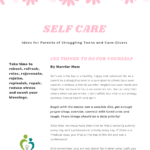In an era where education often feels like a chore, finding inventive ways to spark a lifelong passion for learning in your child is crucial. As a parent, you hold the power to transform learning from a mundane task into an exciting adventure. Here are some effective strategies to keep learning enjoyable and a thrilling journey for your little ones, courtesy of My Warrior Mom Life.
Explore the World Together
One of the most dynamic methods to nurture a love for learning is by stepping out of the conventional classroom environment. Take your child to museums where history comes alive, science centers where they can touch and interact with exhibits, or nature trails that offer lessons in biology and conservation firsthand. Attending cultural events can also broaden their understanding of the world, allowing them to experience diversity in thought and lifestyle firsthand.
Set Goals as a Team
Collaboration in education strengthens the bond between you and your child and emphasizes the value of goals. Sit down together to discuss and set achievable learning objectives that are tailored to their interests and capabilities. This process not only motivates them but also teaches valuable skills in planning and responsibility. Whether it’s mastering a new math concept or completing a book, reaching these goals together can turn learning into a celebrated shared endeavor.
Model the Joy of Learning
When you dive into furthering your education, such as pursuing an online degree, you set a powerful example for your child. Engaging in studies like psychology allows you to delve into the intricacies of human behavior and cognitive processes, and this program can help you get started—check it out for more info. By balancing this pursuit with your other responsibilities, you showcase the lifelong value of education and personal growth, teaching your child that learning doesn’t have to stop at any age.
Engage with Hands-On Experiences
Swap passive screen time for active, hands-on learning to keep your child engaged. Activities that require interaction and manipulation, like science experiments, cooking, or art projects, make learning tangible and fun. These activities foster creativity and problem-solving skills, offering a more stimulating alternative to the passive reception of information through screens.
Foster a Love for Reading
Dedicate time each day for reading to develop a lifelong reading habit. Choose a variety of books that align with your child’s interests to keep them intrigued and invested, and pick one to read together. Reading not only improves language skills but also opens doors to different worlds and ideas. This daily habit can become a cherished part of your child’s routine, setting the foundation for continuous learning and curiosity.
Cultivate Critical Thinking
Encourage your child to think critically by asking questions that stimulate reflective thought and imagination. Instead of questions with straightforward answers, pose scenarios that require them to consider different outcomes or solutions. This method enhances their analytical skills and encourages a deeper understanding of the content, helping them to apply knowledge in various situations.
Learn in Groups
Group learning can be a fun and effective educational approach. Organize small study groups with your child’s friends or involve family members in learning activities. This social interaction enhances learning, as children often enjoy sharing knowledge and skills in a group setting. It can also lead to innovative ideas and solutions, showing them the value of collaboration and diverse thinking.
Celebrate Learning Achievements
Acknowledging your child’s successes, no matter how small, significantly boosts their self-esteem and affirms their efforts. Whether it’s a breakthrough in a science project or a step forward in reading skills, seize every chance to celebrate. This recognition not only cultivates a positive outlook on education but also drives their ambition to continue exploring and learning. Each celebration acts as a stepping stone, reinforcing their desire to achieve and learn more.
Transforming learning into a fun and engaging experience requires creativity, commitment, and enthusiasm from both you and your child. By integrating these strategies into your educational approach, you not only enhance your child’s cognitive and emotional development but also instill a robust appreciation for the lifelong journey of learning.



















